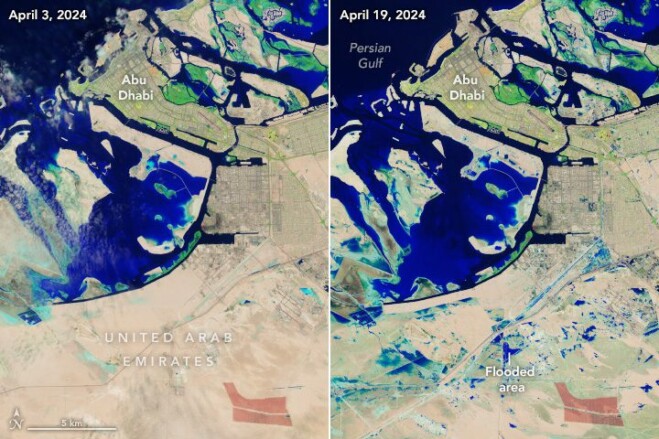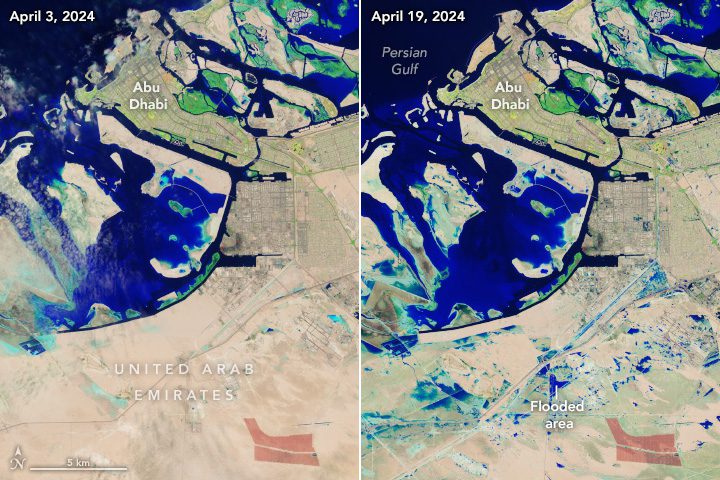

A slow-moving storm system pummeled the United Arab Emirates (UAE) and dropped more than a year’s worth of rain on some cities in April 2024. Heavy rain triggered flash flooding across eastern parts of the country, inundating roads and disrupting transportation.
The system first hit Oman on April 14 and continued to batter the UAE through most of the day on April 16. Some areas remained flooded on April 19, when Landsat 9 passed over the region for the first time since the storms. The before and after images show flooding in Jebel Ali, a town 35 kilometers (22 miles) southwest of Dubai. The images are false color (bands 6-5-3) to emphasize the presence of water, which appears blue. Flooding can be seen in the industrial area of Jebel Ali just south of the port and near the green resorts and parks south of Palm Jebel Ali.
Credit: NASA Earth Observatory images by Wanmei Liang, using Landsat data from the U.S. Geological Survey